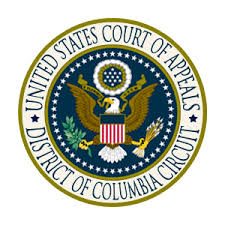April 14, 2021
As the first substantive step in a rather long, “expedited” legal process, the Alliance and its mailer allies, and the USPS, filed initial briefs with the U.S. Court of Appeals on April 13. The schedule will last well beyond the Postal Service’s first tax on mailers expected this summer or fall.
The Schedule
- April 13 – Brief for Mailer Petitioners (10,000 words)
- April 13 – Brief for U.S. Postal Service (10,000 words)
- June 14 – Brief for Respondent (PRC) (20,000 words)
- June 28 – Brief for Mailer Petitioners as Intervenors (4,550 words)
- June 28 – Brief for U.S. Postal Service as Intervenor (4,550 words)
- July 12 – Reply Brief for Mailer Petitioners (5,000 words)
- July 12 – Reply Brief for U.S. Postal Service (5,000 words)
- July 19 – Deferred Appendix
- July 26 – Final Briefs
- TBD – likely in the fall – Oral Arguments
- TBD – Court Decision
- TBD – Appeal(s) to the Supreme Court
The Summary
Here is the summary of our argument:
Congress spoke clearly and unequivocally in the Act: the Commission was
to craft a regulatory system that would keep USPS’s costs down and its prices
reasonable, to both ensure USPS’s long-term viability and protect its monopoly
customers. A price cap was a central “requirement” of the Commission’s ratesetting system. The Commission was to review that regulatory system 10 years
hence to ascertain whether the system required modification. Nowhere in the Act,
however, did Congress permit the Commission to dispense with the Price Cap or
other statutory requirements.
In usurping the power to jettison the statutory requirements, the Commission
essentially rewrote the statute. It claimed that the statutory requirements apply
only to the “initial” ratemaking system and that the Act “expressly” grants the
Commission the power to eliminate the Price Cap. Neither claim is true. Indeed,
not only is that result inconsistent with the text of the statute, but it is belied by the
longstanding role that Congress has played in this area. Furthermore, interpreting statute as the Commission did would place the statute in tension with
separation of powers principles, because, stripped of everything except broad
objectives, the statute lacks bottom-line limitations on the Commission’s
discretion.
Even assuming that the Commission’s interpretation of the statute were both
correct and permissible, the rules should still be vacated as arbitrary and
capricious. First, the Commission’s rules move the ratemaking system farther
away from multiple objectives, violating Congress’s mandate. Allowing
significant above-inflation price increases weakens, rather than “maximize[s],”
“incentives to reduce costs and increase efficiency” (Objective 1). Allowing price
increases to fluctuate annually, above and beyond the Price Cap, eliminates the
predictability and stability on which customers rely (Objective 2). The
contemplated increases—clocking in at 7.562% above inflation—threaten to render
rates unjust and unreasonable (Objective 8). And these massive authorized price
increases will harm USPS’s long-term financial stability (Objective 5) by causing
volume declines—the “death spiral” that Congress feared. The Commission acted
arbitrarily and capriciously by adopting a system that cannot reasonably be said to
serve those statutory objectives.
Second, the Commission’s rules will exacerbate the very problem they were
ostensibly designed to fix. The Commission identified declines in mail density as key impediment to USPS achieving net income. Order 5763 at 76 (J.A.____);
Order 5337 at 62-63 (J.A.____). But its authorization of price increases 7.5%
above inflation in year one alone will accelerate further declines in mail density.
That the “solution” worsens the perceived problem is arbitrary and capricious.
Finally, the Commission ignored evidence regarding USPS’s finances in
crafting its rules, including increases in year-over-year revenues, that USPS has
achieved net income, and that the pandemic had measurably improved the financial health of USPS while magnifying the density rule’s impact beyond the
Commission’s expectations.
The Commission has acted beyond its statutory authority. Even so, the
Commission’s final rules fail to understand the current market for postal services
and its response to rate increases. Because the final rules contravene statutory
requirements and do not result in a system that achieves the statutory objectives,
the rules are arbitrary and capricious, and must be vacated.


Leave a Reply